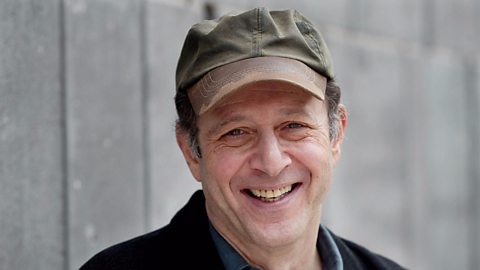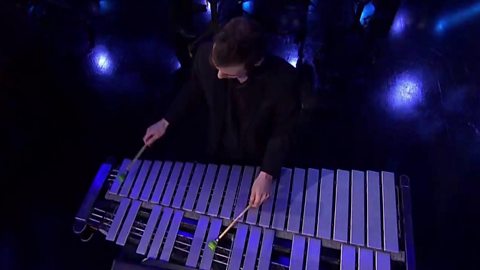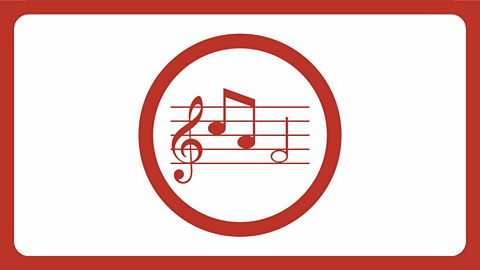Dates: b. 1937
Nationality: American
Period: 20th Century
Genre: Minimalist
Key Musical Elements:
- Form and Structure

Why is he a Trailblazer?
Smashing musical boundaries, trailblazer Steve Reich mixed together his classical training with his love of African drumming, jazz and pop music, and helped to invent a whole new form of music: minimalism.
His innovations have created the rich, diverse musical world we live in today.
Listen out for:
This music is built on a very few, or minimal, parts: beats, rhythms and pulses, and slowly changing and repeating patterns. This structure of music is called minimalism. It is all about taking music back to a very few or minimal parts, rather than one long melody or complicated harmonies there is a very short motif or rhythmic pattern repeated over and over.
Naomi Wilkinson introduces Steve ReichвАЩs Music for 18 Musicians, a minimalist masterpiece. We explore the short motifs and repeating patterns that make ReichвАЩs music so exciting.
Fast Facts
In the 1960s Reich experimented with sampling and looping tapes, after noticing an exciting effect when two tape recordings of the same phrase вАШItвАЩs gonna rainвАЩ gradually вАШphasedвАЩ in and out of sync with each other. Reich then applied вАШphasingвАЩ to musical instruments, such as two pianos, and with clapping hands.
Curious about many different types of music, in the 1970s Reich travelled to Seattle to study the Balinese gamelan and to Ghana, to study West African drumming вАУ and his own piece, Drumming, was inspired by his time there.
ReichвАЩs music has inspired people like Brian Eno and David Bowie and reflects the development of musical styles like hip hop and dance music. He has been called AmericaвАЩs greatest living composer.
Watch the performance of ReichвАЩs Music for 18 Musicians (excerpt) by members of the ¬йґєєўЌш „“≥»лњЏ Scottish Symphony Orchestra alongside students from The National Youth Orchestra of Scotland and The Royal Conservatoire of Scotland.
Music for 18 Musicians
Steve ReichвАЩs music strips away long, unfolding melodies and complex harmonies and focuses instead on a very few, or minimal, parts: beats, rhythms and pulses, and slowly changing and repeating patterns.
Reich had already explored musical patterns by clapping hands, striking bits of wood and playing two pianos вАУ but, in 1970, Music for 18 Musicians was his biggest experiment so far.
The result is a shimmering, rippling musical tapestry, with instruments, including voices, keyboards, tuned percussion instruments and maracas, creating layers of sound.
Different instruments and rhythms rise to the surface as the musical landscape gradually shifts.
Listening to Steve ReichвАЩs work can be an intense and hypnotic experience!
Resources
KS2 Lesson plans
Explore and download lesson plans for six weeks of learning and activities for Music for 18 Musicians by Steve Reich.

KS3 Lesson plans
Explore and download lesson plans for six weeks of learning and activities for Music for 18 Musicians by Steve Reich.

Ready-made secondary music lesson - Create exciting rhythmic patterns using number series
Explore minimalist rhythmic patterns, develop interesting rhythms using number series and create your own piece inspired by renowned minimalist composer Steve Reich.

Explore and download powerpoint slides for six weeks of learning and activities for Steve Reich вАУ Music for 18 Musicians.

Explore and download powerpoint slides for six weeks of learning and activities for Steve Reich вАУ Music for 18 Musicians.

Download the audio version.

Downloadable .zip file containing arrangement and Reich files. This arrangement is for Grade 4/5 only, owing to the complexity of the piece.

Downloadable .zip file containing figure notes arrangement.

KS3 Bitesize Ten Pieces study guide
Your students can create their own composition at their own pace with this Bitesize Key Stage 3 guide.

Where next?
Why not explore (and learn) the repeating musical patterns in Kerry AndrewвАЩs No Place Like?
Or you could see how John Adams uses the ideas of minimalism in his Short Ride in a Fast Machine.
Explore our other Figurenotes arrangements and discover more about Inclusive music-making with Ten Pieces.
Get creative and upload your responses using the Ten Pieces Uploader!
Upload and showcase your creative responses
Upload your creative responses to the Ten Pieces repertoire for your chance to feature in the Ten Pieces creative showcase.
